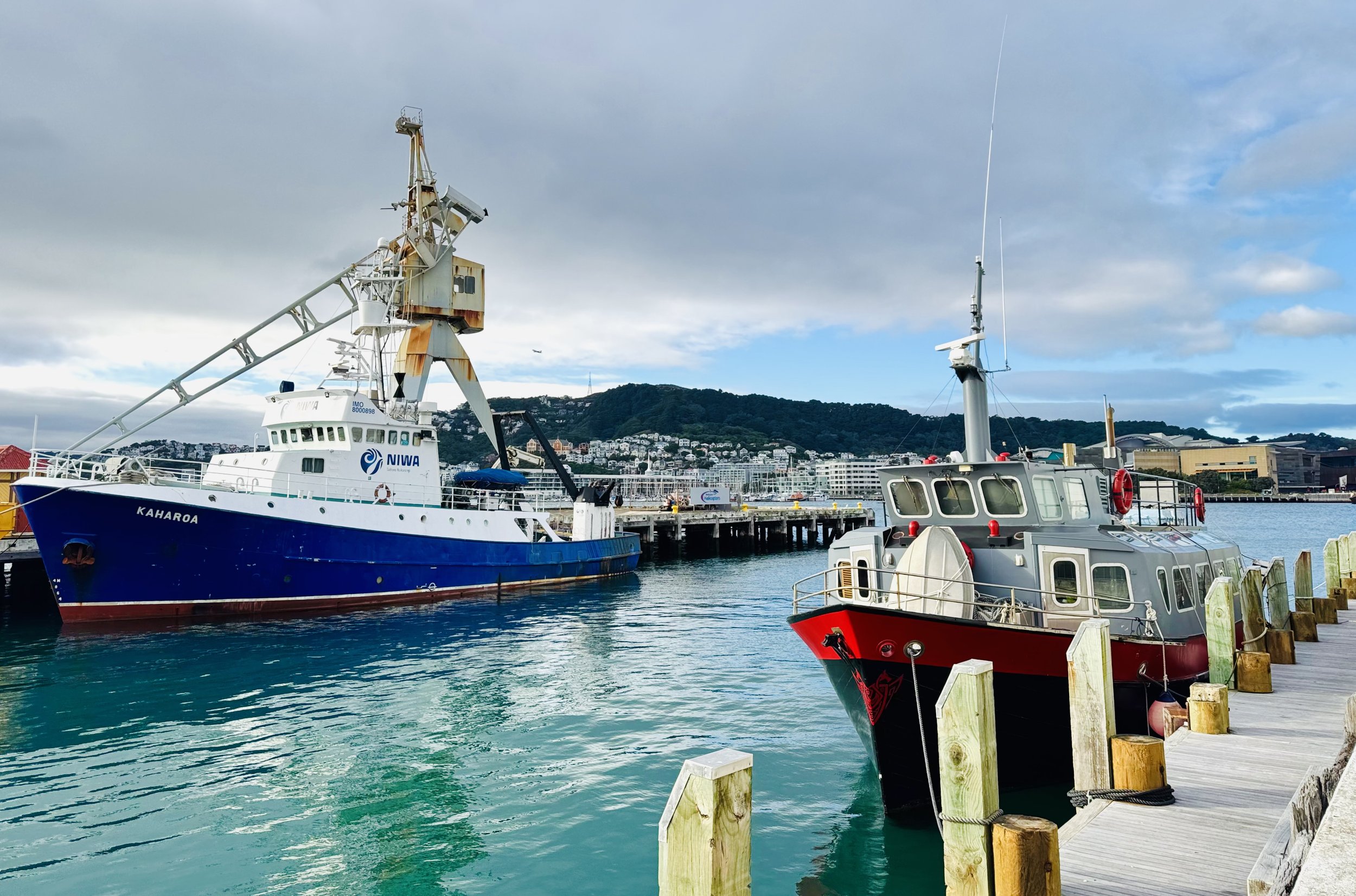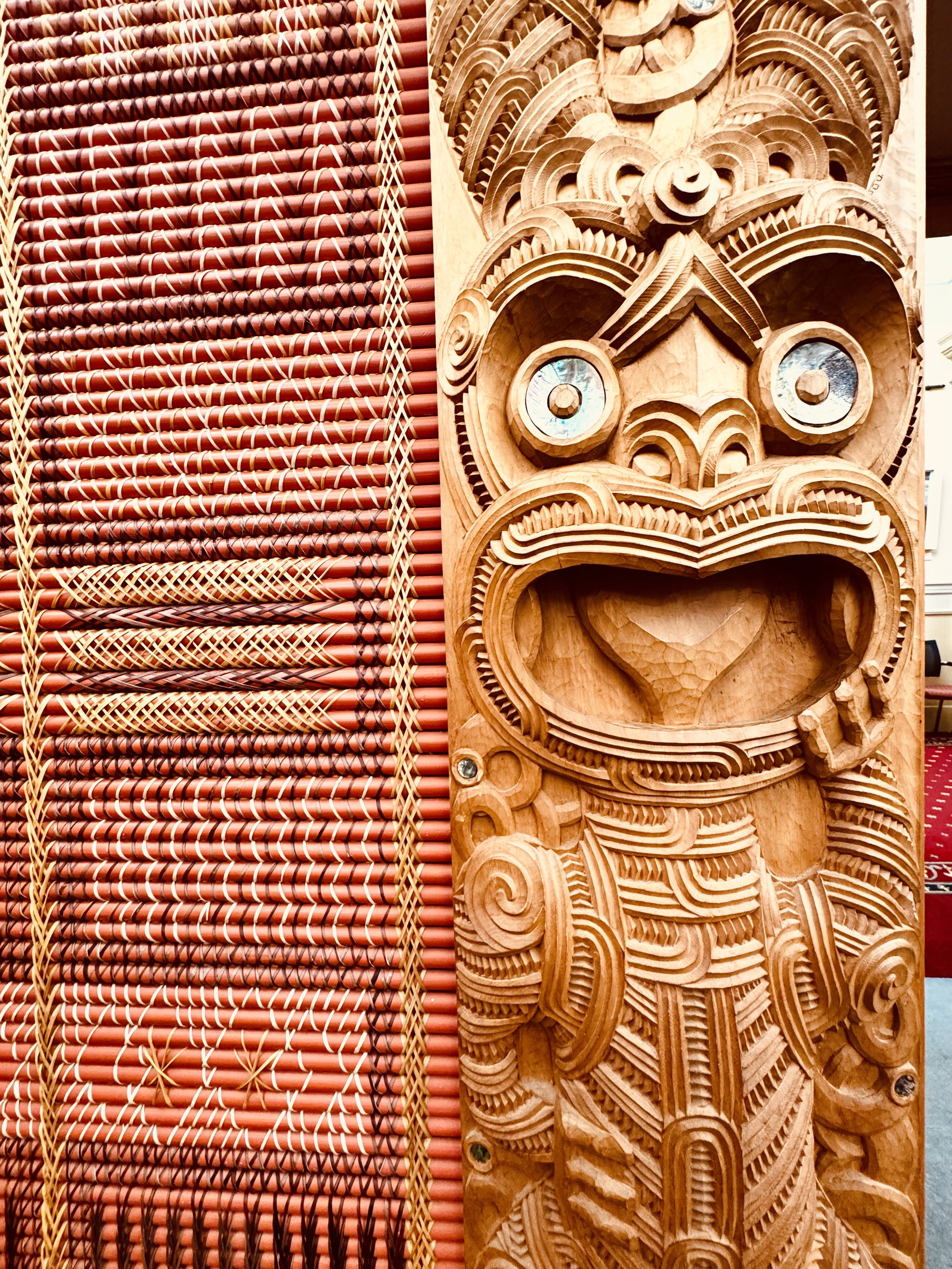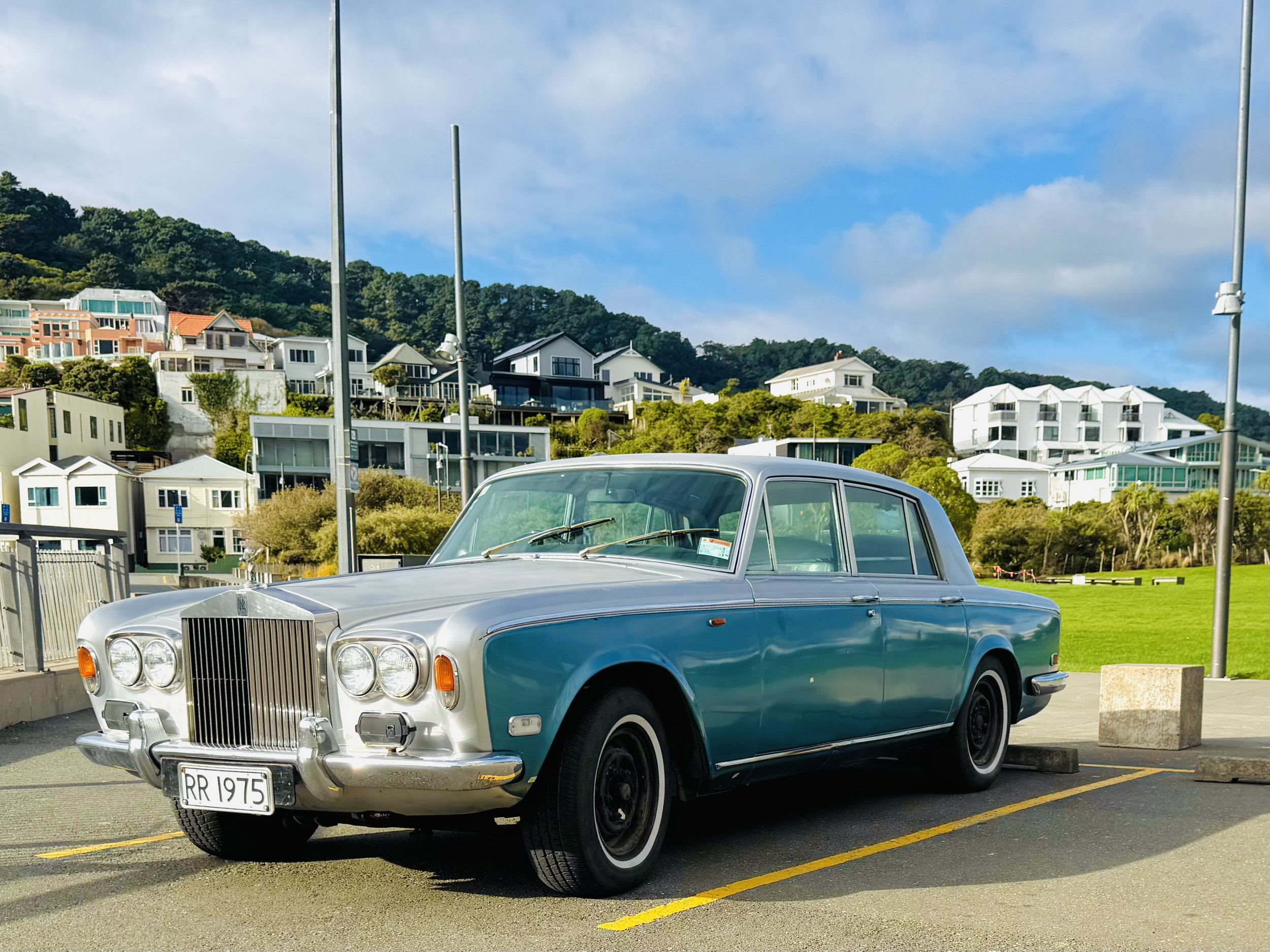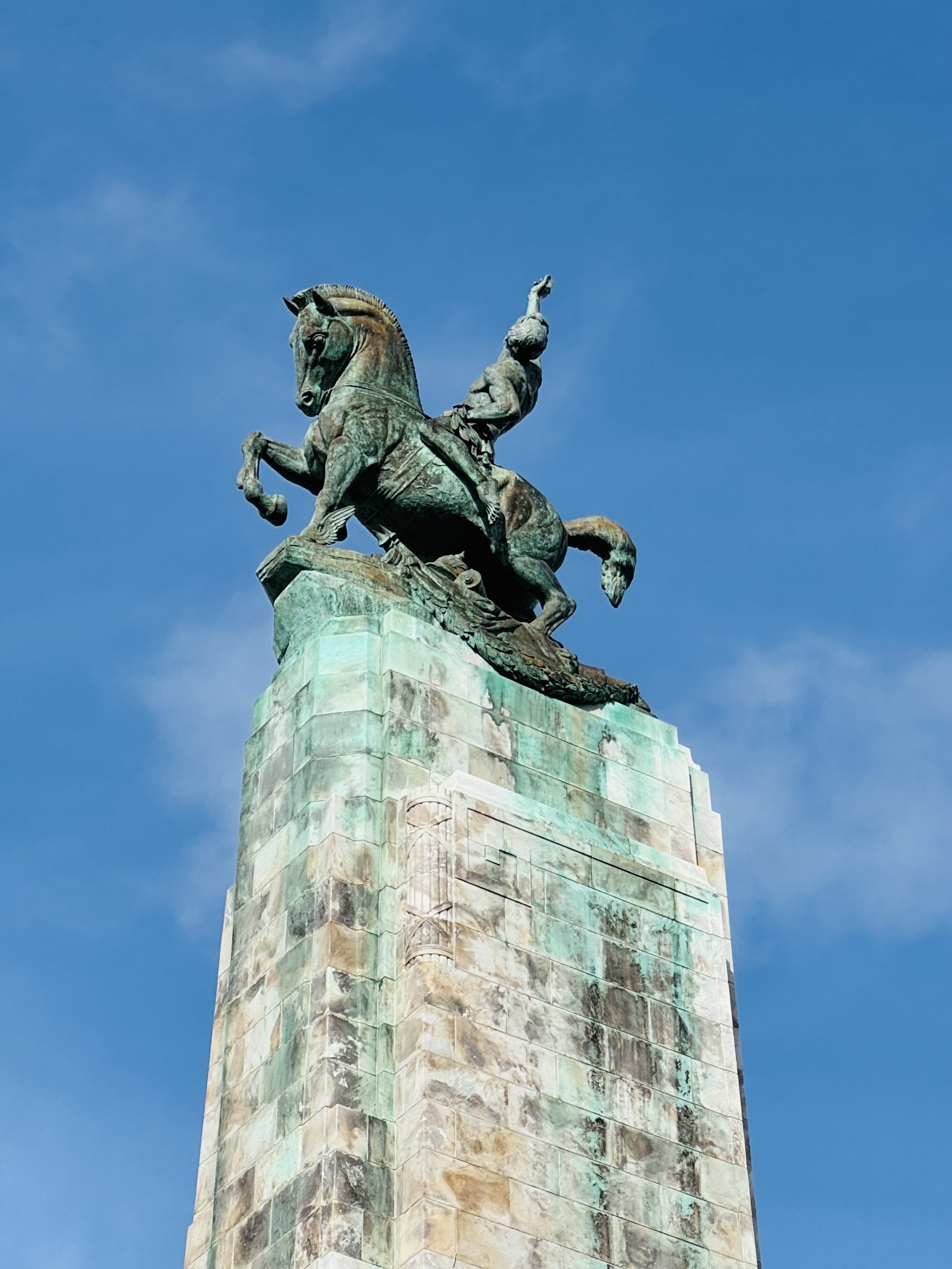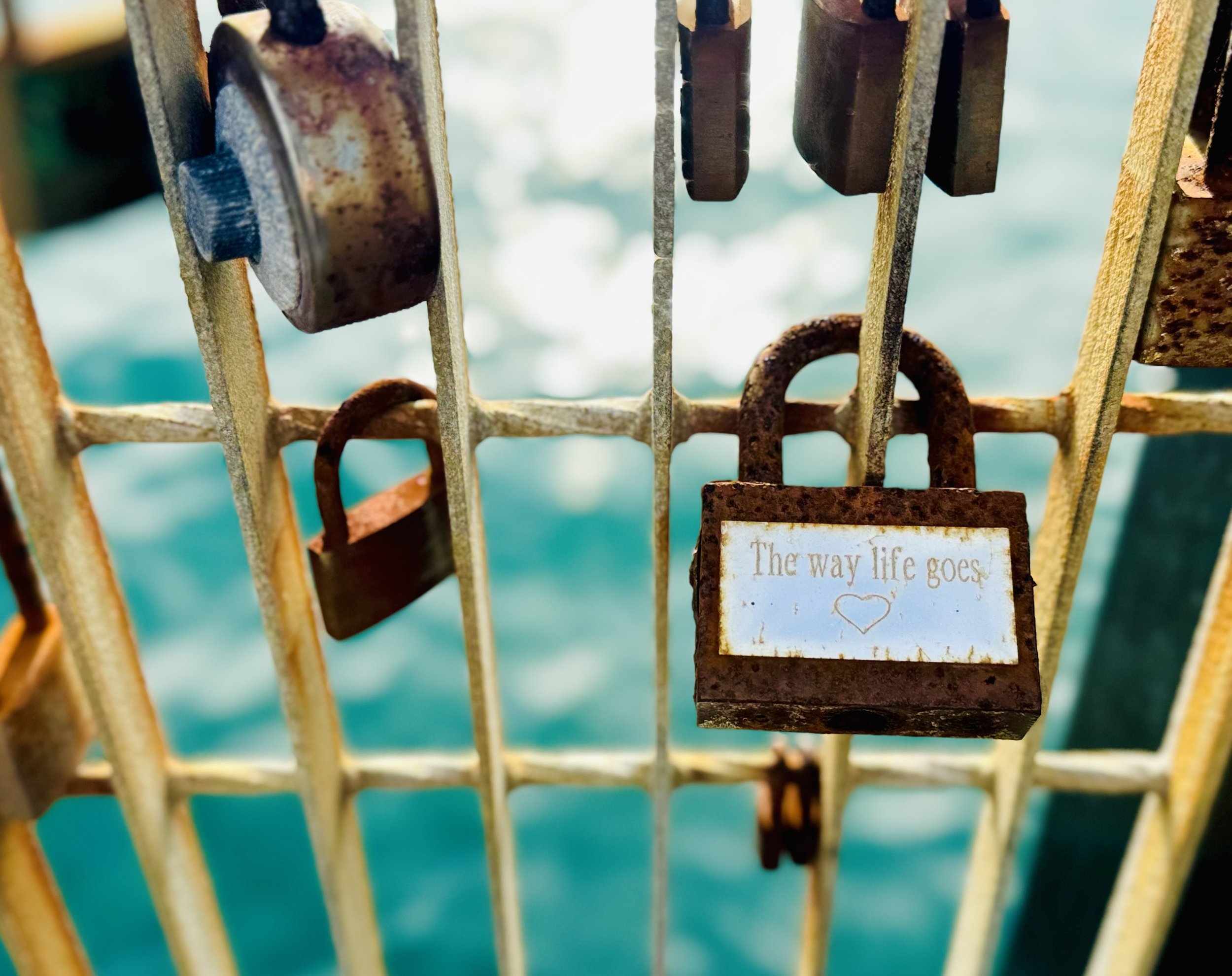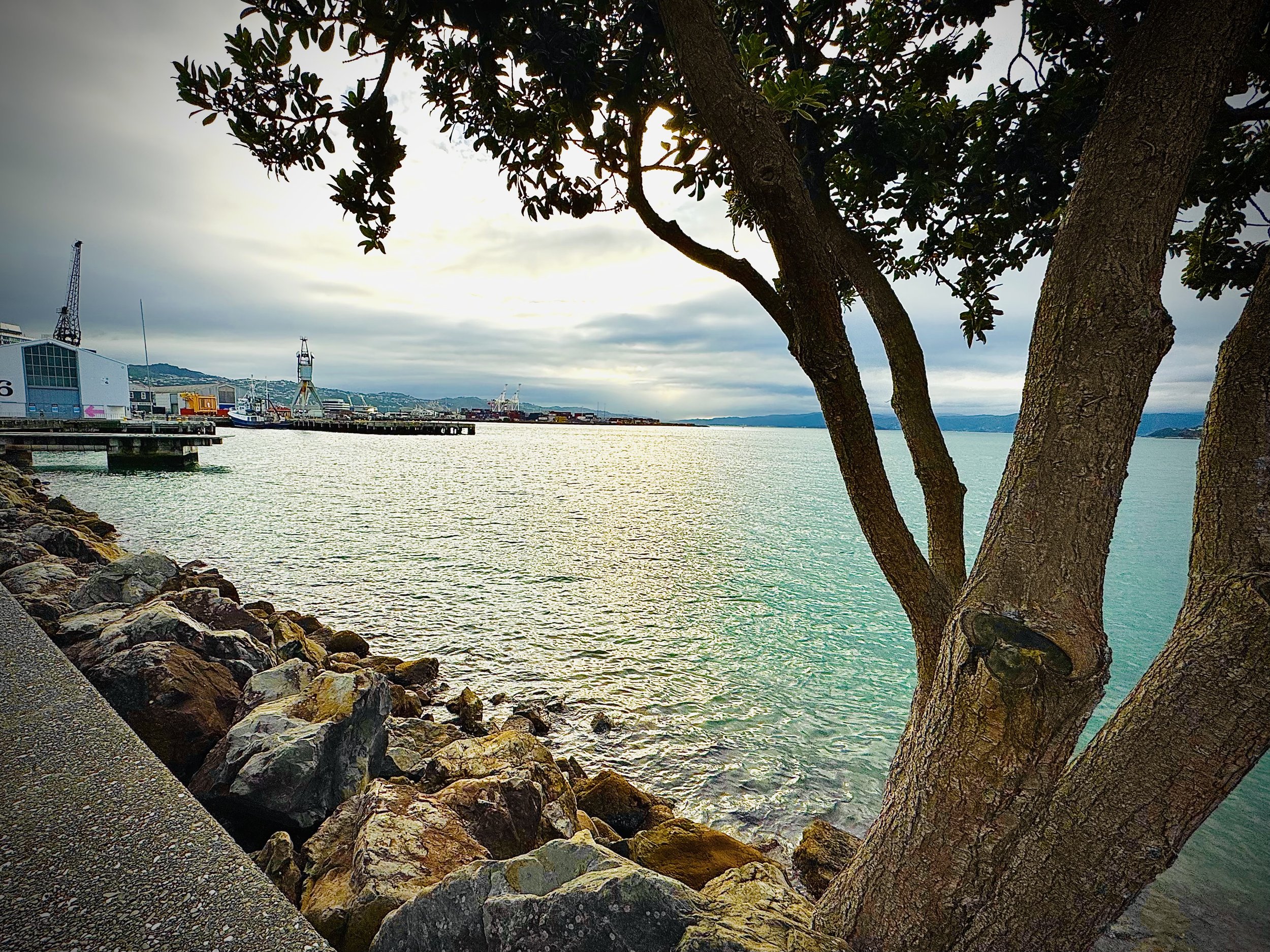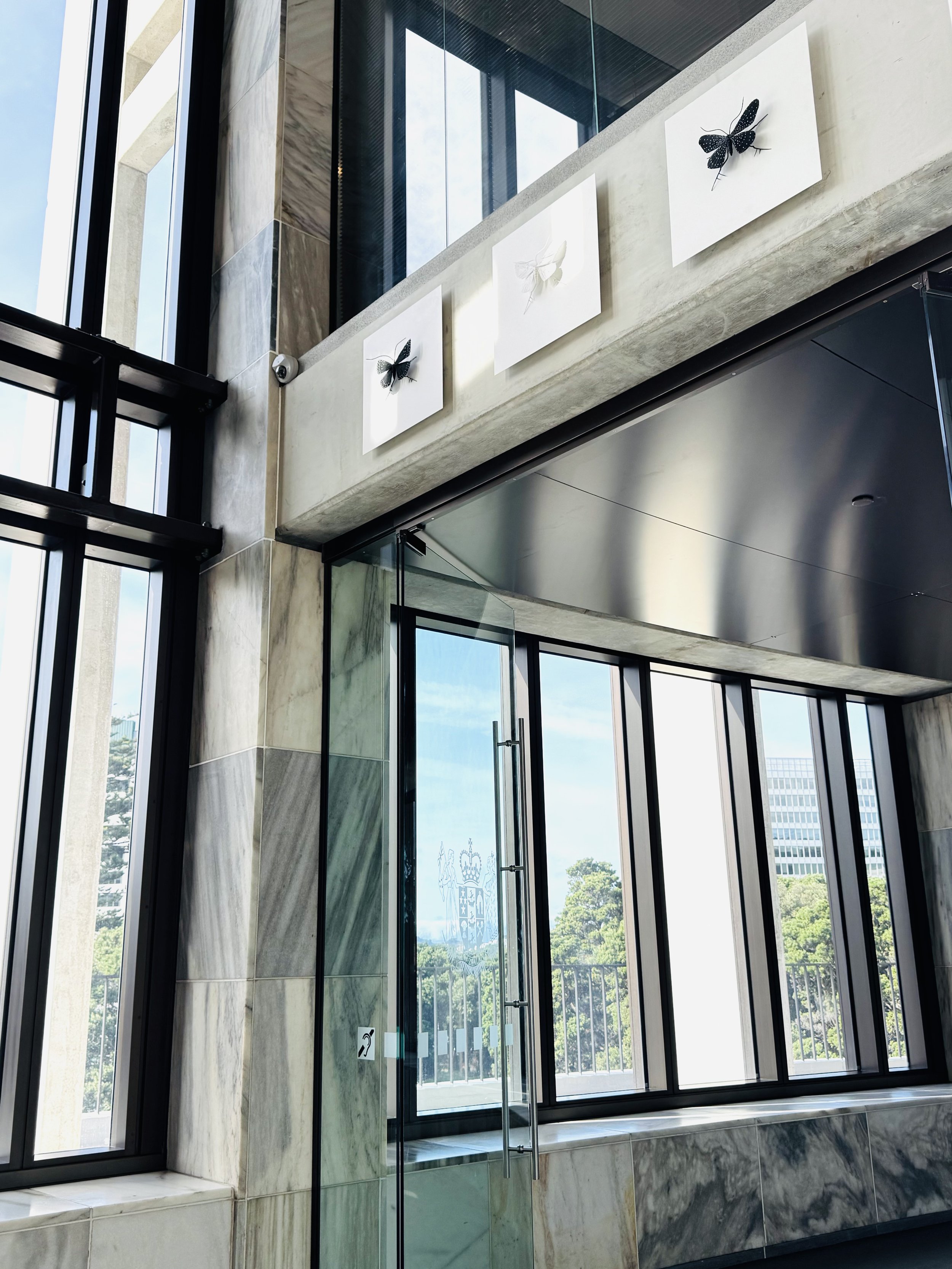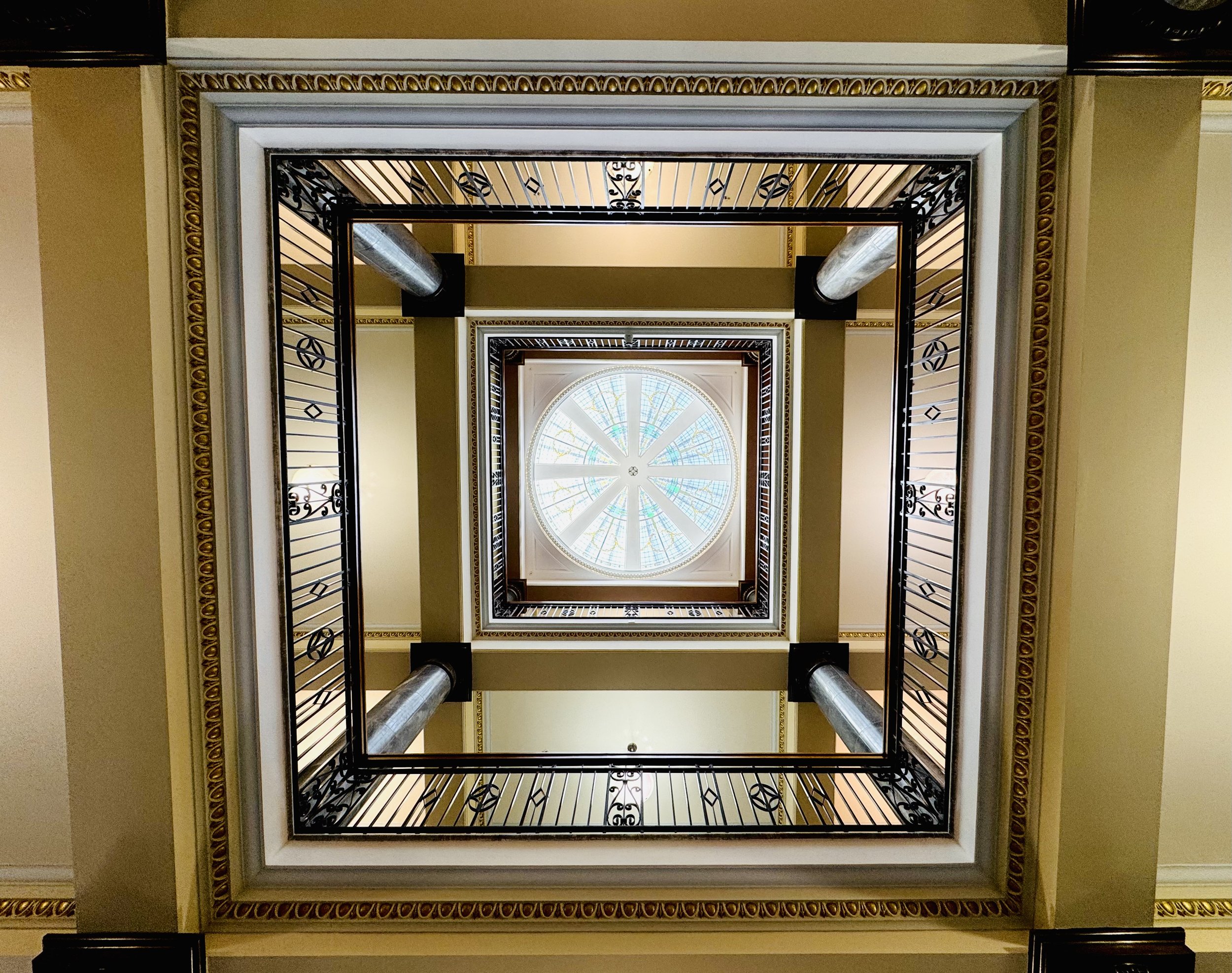3. Solo in the Capital: Queens Wharf, Māori History, Parliamentary Collections.
Apr 28 - 29, 2025
Mission Log #003: Caffeine diplomat and accidental political scholar
John is trapped in conference purgatory, leaving me fully unchaperoned in a caffeinated city. I've purchased at least one decorative item I do not understand. Museums clocked. Parliament infiltrated. Kiwi coffee may contain mild hallucinogens. I have made friends with a pigeon.
Reminder to my five dedicated readers to click the link to see the full gallery of photos.
Monday – April 28
On Monday, I continued wandering Wellington with the energy of a mildly lost exchange student and the wardrobe of a woman whose luggage had likely been vaporized by the New Zealand Fruit Police.
Determined to start fresh, I headed to The Lab café, conveniently located at the base of the Deloitte building—because nothing says “fun vacation” like hanging out at my workplace.
Scanning the menu, I realized New Zealand doesn’t speak Canadian Coffee.
No “Large coffee, two cream.” No “double-double.”
Only elegant, terrifying espresso-based beverages with confusing names.
I bravely ordered a Long Black, trying to appear normal.
Spoiler: It was very clear to every kiwi around me that I was not normal.
My coffee arrived in a dainty, impossibly small cup. No cream. No hope. Just concentrated energy and the subtle judgment of a handful of baristas.
When I asked for cream, the poor soul behind the counter looked like I had asked for a slice of ham in my coffee. Cream in coffee here went out with cassette tapes and rotary phones.
So much so that asking for cream in your coffee costs extra.
Milk only, soldier. Adapt or die.
Buzzing from enough caffeine to legally pilot a drone, I set off along the Wellington waterfront—an endless stroll of art sculptures, historic wharves, and extremely healthy, attractive kiwis jogging in the morning sun.
At Queens Wharf, I paused to admire the Love Locks Bridge, where couples, families, and possibly confused Tinder dates attach padlocks in the name of eternal affection.
Unlike the Florence version (which famously collapsed under the weight of public emotion and poor city planning), this bridge is still standing—and filled with locks that range from moving to deeply unhinged.
(Also witnessed a teenager trying to pick one with a bobby pin. Local culture.)
By 9:30 AM, I was desperate to repair my coffee karma. Enter Raglan Roast, a no-frills institution that runs entirely on caffeine and surfboard energy.
This time, I surrendered.
I explained my tragic Canadian needs.
The barista gently suggested an Americano with milk on the side, and I wept internally.
It was so good—smooth, rich, and free of dairy misunderstandings.
Feeling finally functional, I walked over to Te Papa Tongarewa, New Zealand’s magnificent national museum. Te Papa literally means “container of treasures” in Māori, and honestly, it feels accurate. I reviewed the “what’s on” guide and learned it was full of curiosities.
Giant tectonic plates.
The world’s only preserved colossal squid (terrifying).
Māori history and sovereignty exhibits.
After Te Papa, I wandered up to Cuba Street—Wellington’s chaotic heart, home to vintage shops, street art, record stores, and extremely good street food.
I came across St Pierre’s Sushi and based on the locals lining up for it, I slid in and ordered a tempura dragon roll = chef’s kiss… and admired how Wellington’s aesthetic seems to be “what if an entire city thrifted its vibe.”
Important cultural note: Jaywalking in New Zealand is a casual, cheerful acceptable act.
People absolutely wait for lights… unless they don’t feel like it, in which case, cross when your spirit moves you.
I felt right at home.
Breaking News: Around dinner time, I received word that my luggage had been located and delivered. I came back to the hotel to find my yellow hardshell luggage. Inside was a stern little card from New Zealand Biosecurity, explaining how thoroughly they had rifled through my socks in search of illicit apples and “We judged you. Hard.”
I chose to be flattered.
Tuesday – April 29
Tuesday dawned bright, ambitious, and probably the nicest weather of the week (about 20 and sunny).
After kissing my husband goodbye, I walked up to the parliamentary district and found myself at Café Cloud, lured in by promises of filtered coffee—a mythical beverage I hadn’t seen offered since arriving.
Regret.
Filtered coffee here is… fine. If by “fine” you mean “like someone boiled the concept of sadness.”
I drank it anyway because I am Canadian, and we are nothing if not polite.
Afterward, I wandered around Wellington’s government district, a place where neoclassical architecture and brutalist disasters seem to be locked in an eternal blood feud.
At the heart of it all: The Beehive.
New Zealand’s executive building.
Shaped like a tiered birthday cake.
Designed either by a visionary or by someone who lost a bet.
The entire area is a contrast of architectural styles—harsh Brutalist concrete cubes next to ornate colonial structures.
Inside Parliament, security asked me if Canada has a Parliament like theirs (answer: yes) and what’s going on with “that Trudeau guy” (answer: he stepped down).
I joined the New Zealand Parliament Collections Tour, which was, in a word, awesome.
Bonus trivia: It was Canadian election day back home, so I felt extremely qualified to talk politics to Kiwis despite being halfway across the planet in tomorrow’s timezone.
Janet, the Tour Guide, led our little band of curious explorers. I followed along eight others— a beautiful, blonde Ukrainian couple with sharp eyes and softer smiles, a three-generation family of women from China who asked thoughtful questions at every stop, a young Australian backpacker in beat-up sneakers, and an elderly Fijian couple who invited me to visit Fiji with them. I loved them all. The magic of the tour wasn’t just the architecture or the archival goldmine—it was the people that I shared this time with.
Janet toured us through the Parliamentary Library looked like Hogwarts with a law degree: ornate iron staircases, book-lined galleries, and that old-wood-and-leather smell of serious thinking.
We visited the House of Representatives Chamber — the classic green leather chairs and polished wooden desks arranged into two opposing sides. We were able to extend our tour and see more within the building because the house was not in session.
Fun fact: unlike Canada, New Zealand only has one legislative house (unicameral), which arguably makes it more efficient, and definitely makes political fights faster.
Hallways lined with portraits of early Māori MPs and key figures in political history, a powerful reminder of New Zealand’s ongoing journey toward honoring indigenous leadership.
The Māori Affairs Committee Room was breathtaking. The room is carved in stunning dark wood, inlaid with paua shell (New Zealand’s abalone) and traditional Māori patterns. Giant portraits of influential Māori leaders line the walls, watching over visitors with an air of gravitas and patience. This room symbolizes partnership — the government recognizing the crucial role of Māori culture in shaping modern Aotearoa (New Zealand).
It’s not just decorative: every carved figure and pattern represents stories, ancestors, and guardianship. Standing in that room, you could feel the weight of history stitched right into the walls. It’s not performative inclusion—it’s a living political reality here.
Canada, take notes.
Somehow, our tour group walking the halls of the New Zealand legislature, we started comparing countries, sharing stories, and laughing about the universal struggle of democracy. I found myself slipping into full Canadian diplomacy mode—chatty, cheerful, slightly overapologizing—fielding questions about our government, our healthcare, and yes, that Trudeau guy.
It felt like the best kind of cultural exchange: a spontaneous conversation about democracy, history, and coffee preferences that reminded me that despite our differences, we’re all just trying to make sense of how to best run our countries.
And this all came together when we finally visited the Treaty Room, where a giant facsimile of the Treaty of Waitangi (NZ’s founding document) stretches across the wall. Seeing it up close — the uneven handwriting, the Māori translations — it hits you: this country has grappled publicly with its colonial past in ways Canada still struggles to match.
We saw wood carved wreaths remembering the New Zealand participation in major wars (such as Afghanistan, Somme, North Africa), and symbols of the Commonwealth era like the ornate royal collection urn with New Zealand’s iconic silver fern and Canada’s maple leaf crest proudly displayed side-by-side.
We walked through hallways lined with art:
Paintings depicting New Zealand soldiers at Passchendaele.
Modernist Māori paintings like “Mother and Child” evoking powerful indigenous themes.
A huge vibrant tapestry draped down the wall of the Beehive’s grand stairwell, symbolizing Aotearoa’s journey through chaos and hope.
There was even a room honoring Parliamentarians who served and died in World War II — a simple black plaque listing names that made the otherwise grand halls feel humbling and human.
Finally, before the tour wrapped, we were shown the New Zealand flag salvaged from the rubble of 9/11—a quiet but gut-punching reminder of solidarity across oceans.
Emotionally and intellectually full, I needed food immediately.
Wandering the streets again, I found a local sushi truck called Sushi Bi, where you serve yourself, and your plate is weighed like a delicious produce auction.
The curry bomb sushi roll might have changed my life.
Finally, I retreated back to the Rydges hotel, passed out in bed at 3PM, and took the most government-approved nap of my career.
Final Thought: If Monday was about learning to decode coffee, and Tuesday was about learning to decode colonial history, then I guess this week is shaping up to be a masterclass in new-to-me ideas.
📡 ANALYTICAL COMMENT
New Zealand’s parliament doesn’t just talk about inclusivity—it’s built into the walls. From the carved Māori designs to the Treaty of Waitangi room, it’s a living reminder that government can honor both tradition and progress. Meanwhile, Canada’s still debating whether the Senate is a thing we need or a thing we just forgot to delete.
